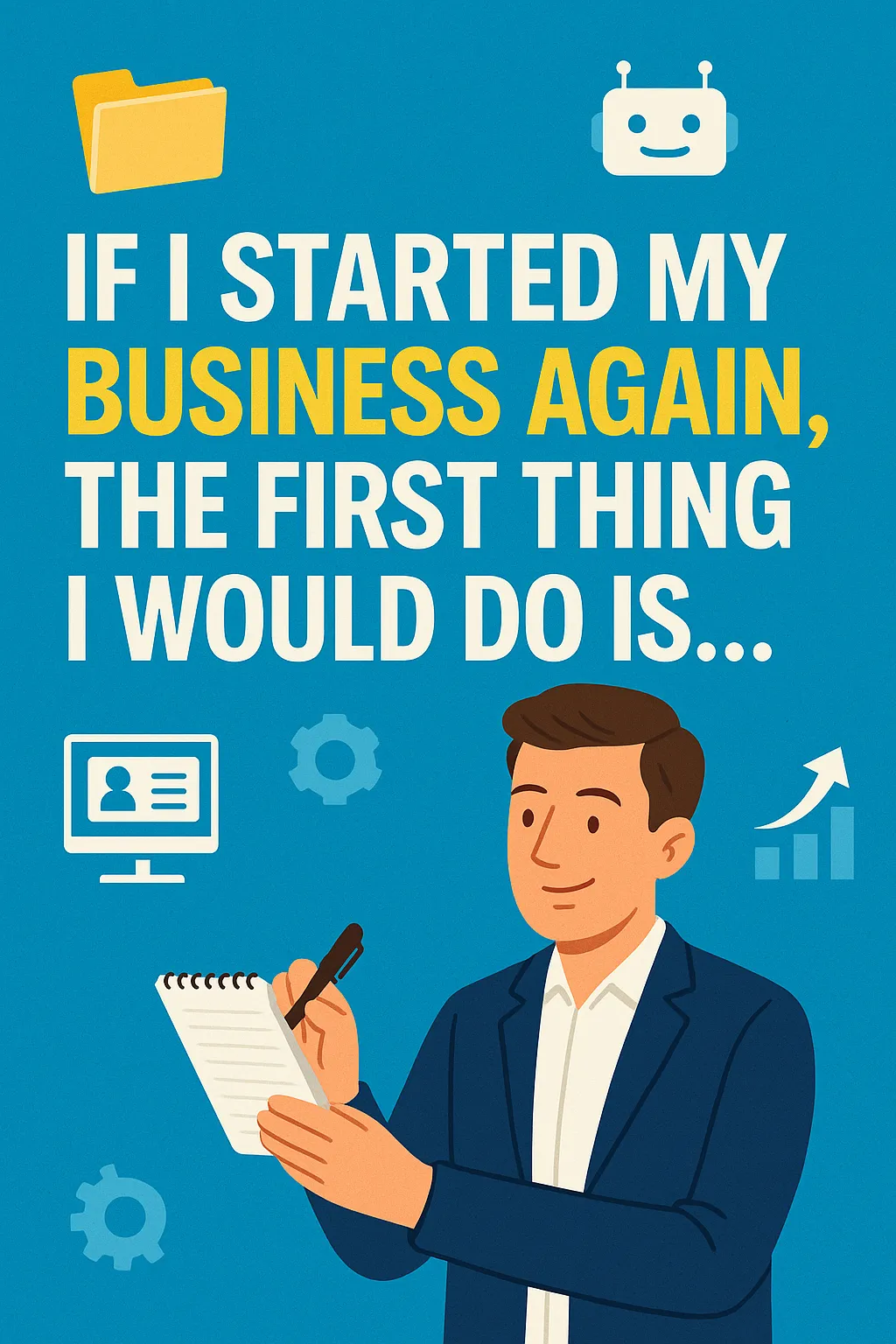
If I Started My Business Again, the First Thing I Would Do Is...
Recently, I was reflecting on this topic. If I started my business again today, what is the first thing I would do? And as is typical of me since I don't focus so well, I have two critical moves that would change everything.
Document Everything From Day One
I would immediately start documenting everything I was doing. I would use Loom and Dan Martell's "camcorder method" to make sure that every single thing I did was captured. Then I'd take this documentation and feed it to Google NotebookLM to form the foundation of my process library.
Here's what I've learned the hard way: the key to operational freedom and scalable growth is documented processes. And the longer you wait to document, the harder it becomes.
Think about it. In the past, the barrier to getting your processes documented was that it's a pain in the ass. You have to take time out of your busy day to write down each step. Who has time for that? I can tell you who doesn't—a busy small business owner who has to hustle every minute of every day to keep the lights on.
Not anymore.
With the simple tools I mentioned above (Loom and Google NotebookLM), you can document and accumulate your process manual with very little incremental effort. Just hit record, walk through what you're doing, and let the AI do the heavy lifting.
The Game-Changer: Your Knowledge Becomes a Chatbot
The beauty of NotebookLM is that it turns your knowledge base into a chatbot. You can use plain language to ask questions based on your process manual. So as you grow and hire new people, they can use the notebook as a source for answers.
This beats the alternative—which is YOU being the answer to every question.
Here's my testing framework: As you work, pretend you're new to the business and ask your process notebook questions to guide you through the task at hand. If it does a good job answering and guiding you through, congrats—you're done with that section. But if it falls short, jump into your process document and make the necessary updates.
Over time, it gets better and better, and the tweaks become fewer and further between.
Optimize Your CRM From Day One
The other thing I would do first is sign up for my CRM and start optimizing it from day one.
Similar to the process manual, the further into business you get, the harder it is to implement and optimize your CRM effectively.
I would start by:
Getting my existing contacts loaded, categorized, and labeled
Looking at what automations and drip campaigns the CRM offers
Building those systems out immediately
Leads and conversion are the lifeblood of your business. Your CRM, if optimized, will support that growth engine. The sooner you can get that in place, the more you can leverage it to build your scalable, sustainable business.
Why These Two Things Matter Most
Most entrepreneurs get trapped in the "doing" instead of building systems for others to do. These two moves—documenting processes and optimizing your CRM—create the foundation for everything else:
Freedom: You're not the bottleneck anymore
Scalability: New team members can hit the ground running
Consistency: Your best practices become repeatable
Growth: Your leads get nurtured even when you're not working
Your Next Move
If you're reading this and thinking, "I wish I had started this sooner," here's the good news: the best time to plant a tree was 20 years ago. The second-best time is today.
Pick one process you do regularly this week. Record yourself doing it with Loom. Upload it to NotebookLM. Start building your freedom, one documented process at a time.
What's one process in your business that you do repeatedly that could be documented this week? Let me know in the comments—I'd love to hear what you're working on.
